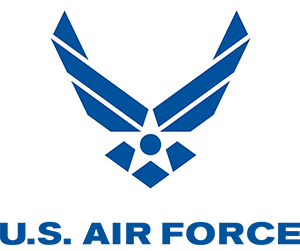Education & Training
Paying for College
The Military offers many educational benefits that service members can take advantage of during or after service. From financial aid and college funds to loan repayment programs, there have never been more ways for service members to afford and further their education.
Transcription
Related Videos
The Many Education Benefits of Military Service
The Many Education Benefits of Military Service
Tuition Support in the Army National Guard
Tuition Support in the Army National Guard

Tuition Assistance
The rising cost of tuition can be hard to manage, but the Military’s Tuition Assistance program provides service members the opportunity to enroll in courses at:
- Accredited colleges
- Universities
- Junior colleges
- Vocational-technical schools
Each Service branch has unique programs that can help with tuition for anything from professional certifications to a graduate degree.
To qualify, there are usually conditional requirements, such as having a minimum amount of time remaining on your service contract and a cap on credit hours (or dollars) per year.
Good to Know: Some Tuition Assistance programs, such as the Coast Guard’s College Student Pre-Commissioning Initiative, require that you attend a school from a designated list.
Tuition Assistance pays for up to 100 percent of the cost of tuition or expenses, up to a maximum of $250 per credit and a personal maximum of $4,500 per fiscal year per student. This program is the same for full-time members in all Military Services. Selected Reserve and National Guard units also offer Tuition Assistance programs, although the benefits may vary from those of the Active Duty program.
The Post-9/11 GI Bill
The Post-9/11 GI Bill became effective on August 1, 2009, and has the most comprehensive education benefits package since the original GI Bill was signed into law in 1944.
Post-9/11 GI Bill at a Glance
Available to veterans who have served after September 10, 2001, with at least 90 days of continuous service.
Reserve and Guard members who have been activated for more than 90 days since 9/11 have access to the same benefits as their active-duty counterparts.
Tuition and Fee Reimbursement
The Post-9/11 GI Bill pays all public school in-state tuition and fees. The full benefit amount an individual can receive is calculated from these numbers:
- Tuition and fees payment (not to exceed the highest public in-state undergraduate tuition and fees in each state)
- Living stipend (equivalent to basic housing allowance in that ZIP code for an E-5 with dependents)
- Allowance for books and supplies ($1,000 per year)
The actual benefit amount will vary based on an individual’s total length of service. For example:
- Those who have served at least 36 months or 30 continuous days prior to discharge for a service-connected disability can get maximum tuition and fees, a monthly housing stipend, and an annual stipend for books and supplies.
- Those who have served at least 90 days, but less than six months, receive 50 percent of the maximum benefit.
Yellow Ribbon Program
Colleges and universities that participate in the Yellow Ribbon Program contribute additional funds toward educational costs that exceed the maximums allowed by the Post-9/11 GI Bill. Institutions may set the amount they wish to contribute, which is matched by U.S. Department of Veterans Affairs. This can be very beneficial for students at private colleges and universities, graduate programs or those attending with out-of-state status.
Sharing Benefits with Family
In exchange for an additional service commitment, a service member may be able to transfer all or part of his or her earned benefits to spouses and children (including stepchildren). This is a first for the GI Bill and opens up new opportunities for service members and their families.
For examples and maximum allowances state by state, visit the Veterans Affairs site or speak with a recruiter.

College Fund Programs
College Fund Programs are offered to service members when they first join the Military. Also called the GI Bill “kicker,” they offer an additional amount of money that can be added to the Post-9/11 GI Bill.
- With the exception of the Navy and Air Force, each Service branch has College Fund Programs.
- Incentives and amount received vary by Service branch.
- A high school diploma is required.
- Applicants must be enrolled in the Post-9/11 GI Bill.
- The Air Force doesn’t have a College Fund Program, but it does have a community college.
Depending on your Service branch, test scores and occupation, there may also be additional requirements. Talk to a recruiter to find out if you are eligible and to ask for an application.
Loan Repayment Programs
The Army and Navy offer loan repayment programs to help enlisted personnel pay off college loans accrued prior to service. While each program has unique processes and requirements, they’re all enlistment incentives designed to help recent college graduates manage education debt.
Army
In the active-duty Army, Soldiers can qualify to have their loans repaid by the Military at the rate of one-third of the loan or $1,500, whichever is greater, for each year of full-time duty served (maximum loan repayment is $65,000). The Army even helps Soldiers pay off student loans they’ve taken out, provided they attended schools on approved Perkins, Stafford or other Department of Education–guaranteed student loans.
Navy
In the active-duty Navy, a Loan Repayment Program of up to $65,000 is also available. Qualifications include no prior military service, a high school diploma and a loan that is not in default. This program is available currently to eligible personnel in the delayed entry program who will enlist as active duty Sailors.
Additional Resources and Support
For even more information about educational opportunities and financial assistance for service members and their families, check out the Department of War's Military OneSource. Here you’ll find a comprehensive list of programs, services and organizations that are focused on making a quality education accessible and affordable.










